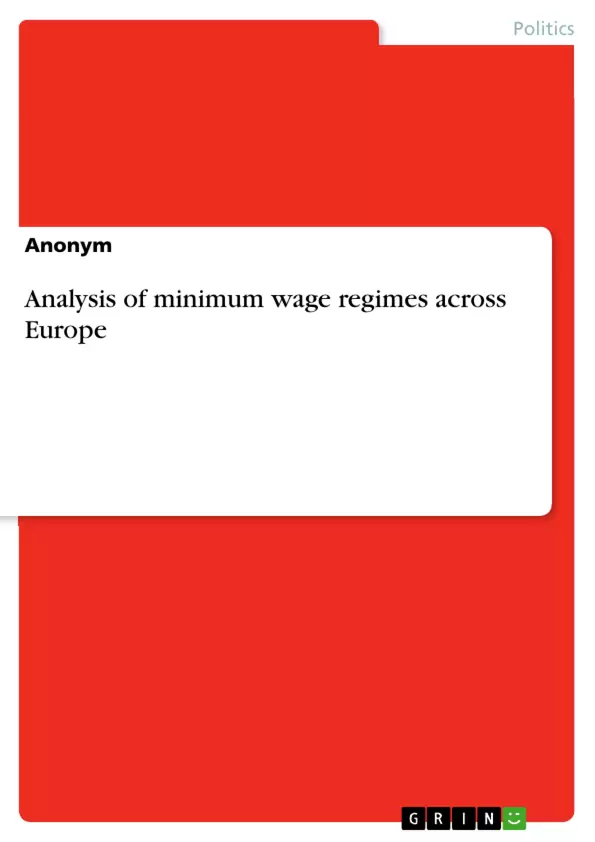1. Definition of a “minimum wage”
2. How many countries do have a minimum wage regime across Europe?
3. How high are minimum wages across Europe?
4. Is there a trend towards the minimum wage across Europe?
5. The importance of minimum wages across Europe/ To how many people does a minimum wage
apply across Europe?
6. Is the eastern European expansion of the EU a reason for the introduction of minimum wages
across Europe?
7. Is a minimum wage regime favourable in economic and social terms?
8. Is there a legal right to gain a sufficient remuneration – a minimum wage?
9. How could a European perspective of a minimum wage regime look like?
10.Are there alternatives to a minimum wage?
Further reading
Inhaltsverzeichnis (Table of Contents)
- Definition of a "minimum wage".
- How many countries do have a minimum wage regime across Europe?.
- How high are minimum wages across Europe?.
- Is there a trend towards the minimum wage across Europe?.....
- The importance of minimum wages across Europe/ To how many people does a minimum wage apply across Europe?.
- Is the eastern European expansion of the EU a reason for the introduction of minimum wages across Europe?.
- Is a minimum wage regime favourable in economic and social terms?.
- Is there a legal right to gain a sufficient remuneration - a minimum wage?.
- How could a European perspective of a minimum wage regime look like?.
- Are there alternatives to a minimum wage?..........\nFurther reading:.......
Zielsetzung und Themenschwerpunkte (Objectives and Key Themes)
This analysis examines the prevalence and impact of minimum wage regimes across Europe. It aims to define minimum wage, identify the countries with and without such regimes, evaluate the trend towards their introduction, and assess the socio-economic implications of these policies.
- Definition and scope of minimum wage regimes in Europe
- Prevalence of minimum wage regimes across European countries
- Trends in the introduction of minimum wage regimes over time
- Economic and social impact of minimum wages
- Alternative approaches to ensuring fair remuneration
Zusammenfassung der Kapitel (Chapter Summaries)
- Chapter 1 defines "minimum wage" as the legally enforced lowest remuneration, including wages set by collective agreements. It emphasizes that minimum wages typically apply to most employees within a country.
- Chapter 2 outlines that in January 2010, 20 out of 27 EU Member States and two candidate countries had national legislation establishing minimum wages. The article lists the countries with and without minimum wage regimes.
- Chapter 3 highlights the significant variation in minimum wage levels across Europe, ranging from 123 EUR in Bulgaria to 1,683 EUR in Luxembourg. When adjusted for purchasing power, the range decreases, but disparities remain.
- Chapter 4 underscores the clear trend towards implementing minimum wage regimes in Europe over the past four decades. The chapter highlights the key years and countries where minimum wages were introduced.
Schlüsselwörter (Keywords)
Minimum wage, European Union, labor market, economic impact, social impact, legal framework, collective agreements, purchasing power parity, trends, alternative approaches.
- Quote paper
- Anonym (Author), 2011, Analysis of minimum wage regimes across Europe, Munich, GRIN Verlag, https://www.grin.com/document/191094



